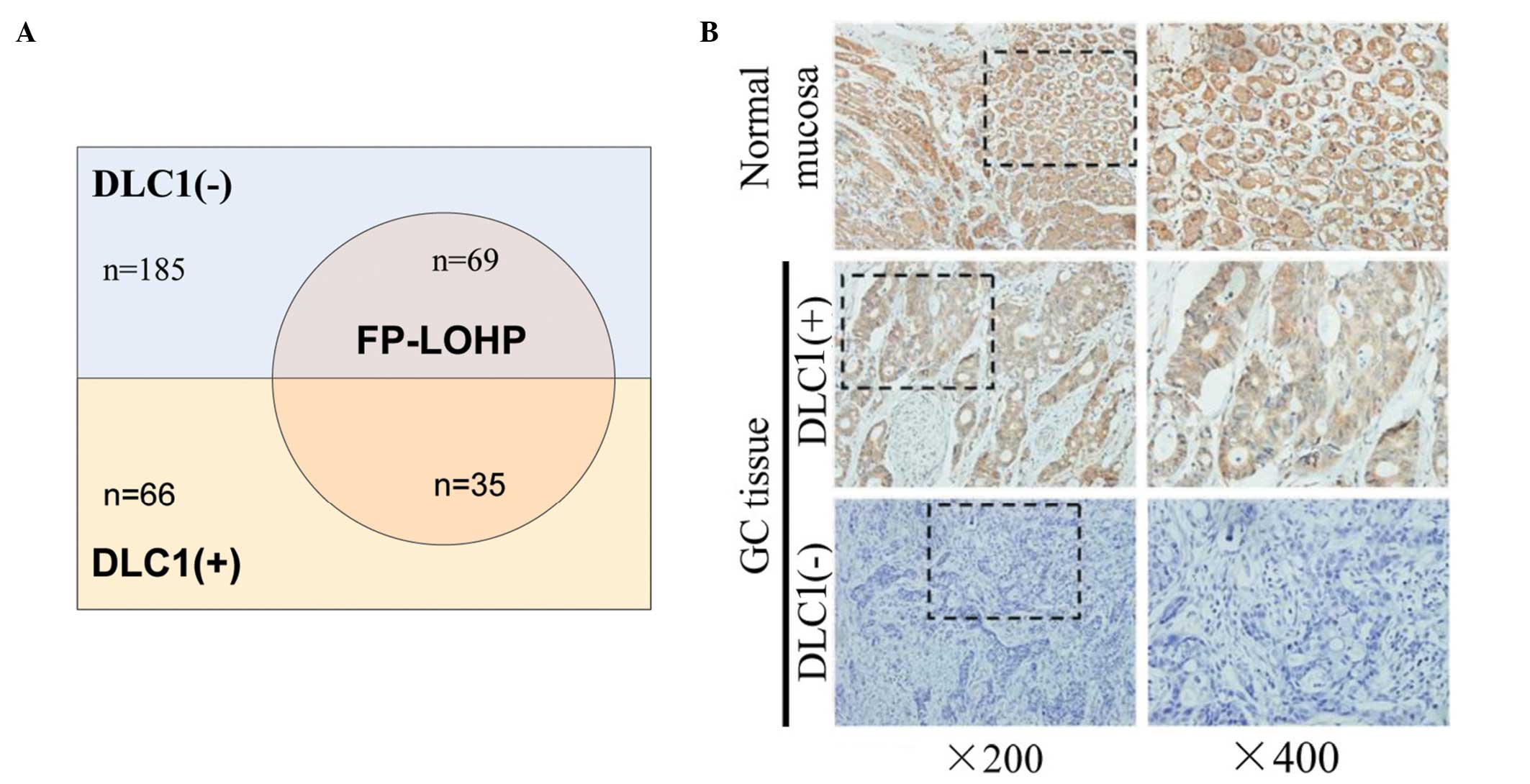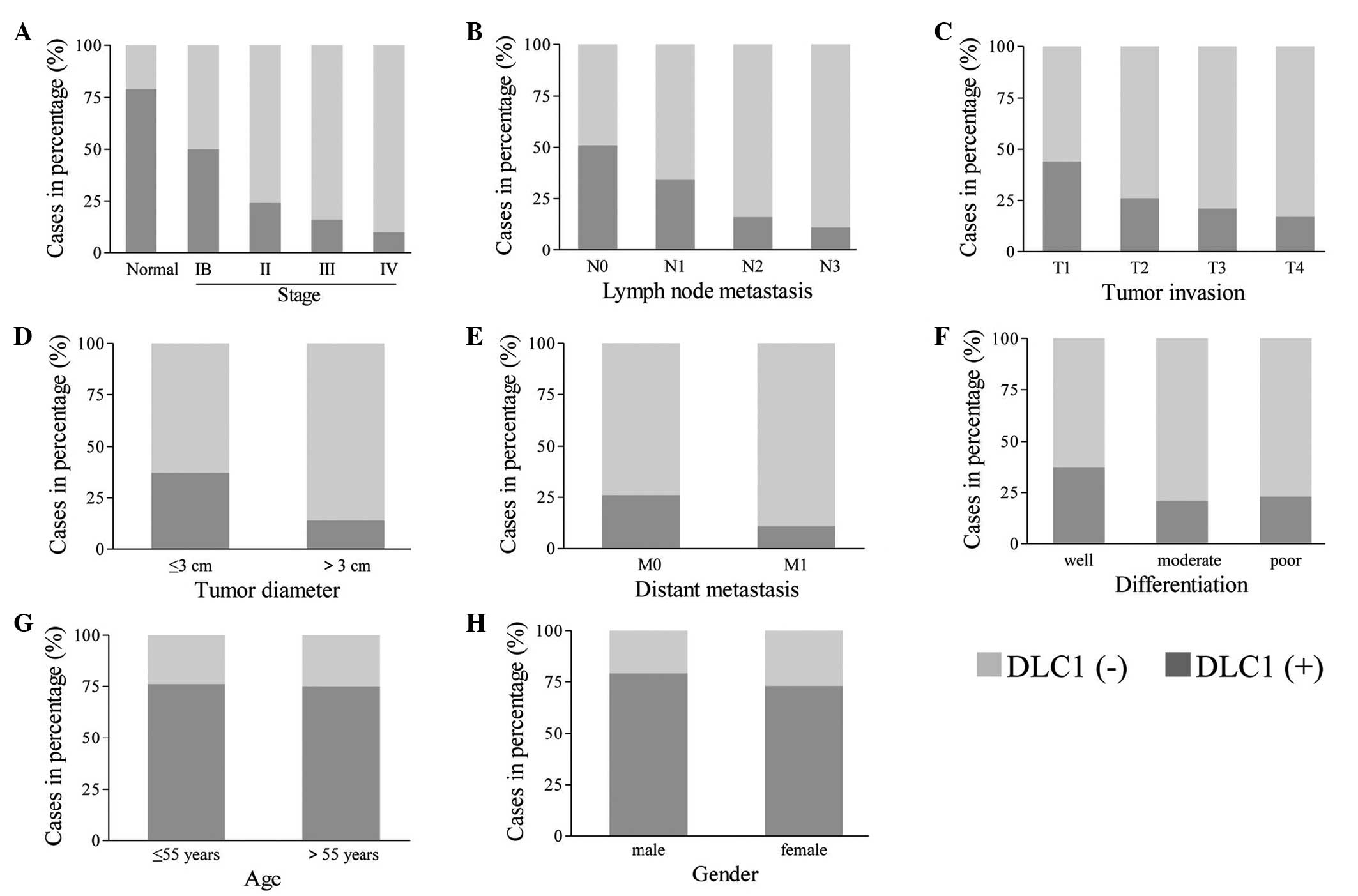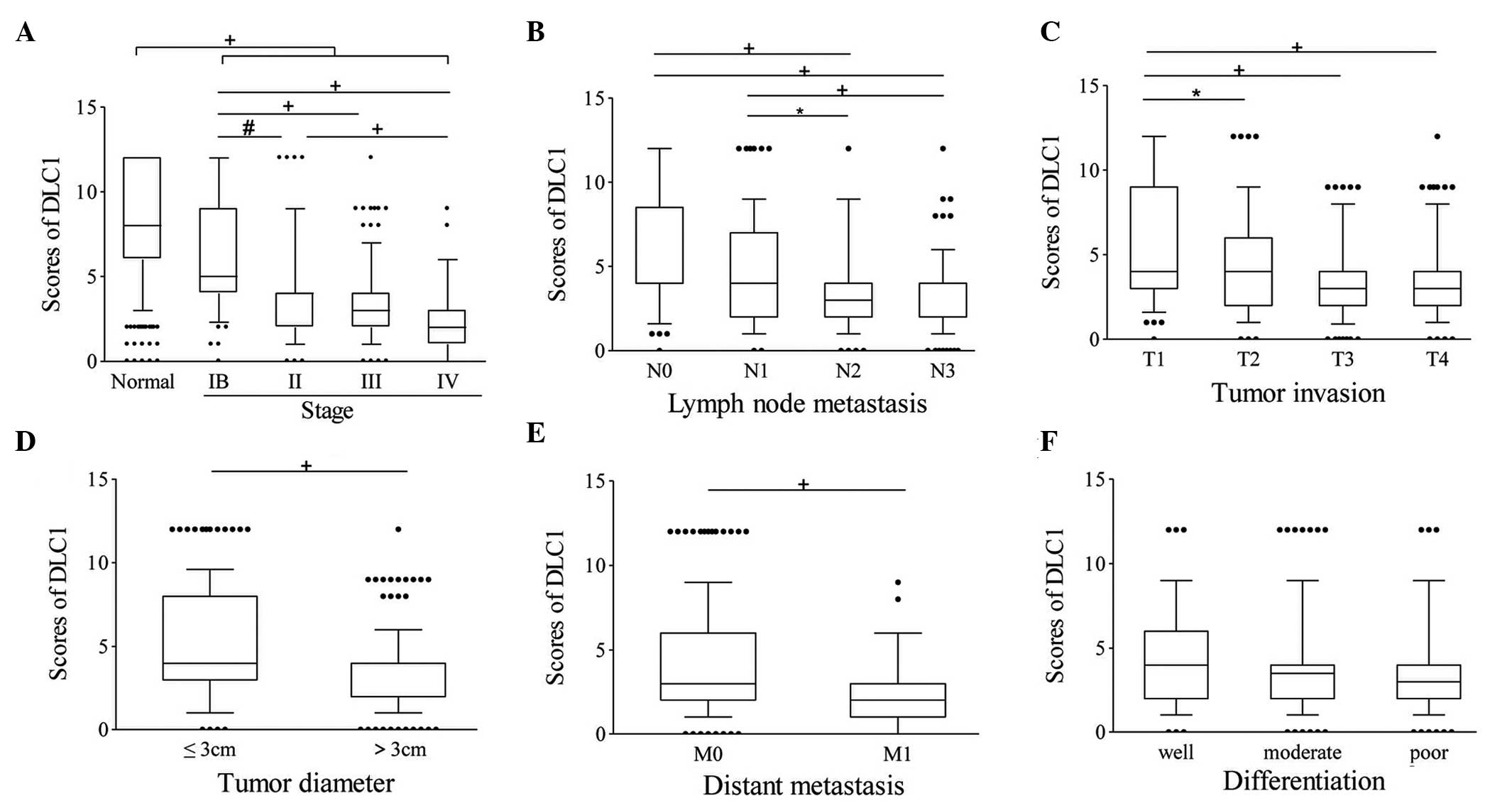|
1
|
Siegel R, Naishadham D and Jemal A: Cancer
statistics, 2013. CA Cancer J Clin. 63:11–30. 2013. View Article : Google Scholar : PubMed/NCBI
|
|
2
|
Macdonald JS, Smalley SR, Benedetti J,
Hundahl SA, Estes NC, Stemmermann GN, Haller DG, Ajani JA,
Gunderson LL, Jessup JM, et al: Chemoradiotherapy after surgery
compared with surgery alone for adenocarcinoma of the stomach or
gastroesophageal junction. N Engl J Med. 345:725–730. 2001.
View Article : Google Scholar : PubMed/NCBI
|
|
3
|
Maehara Y, Hasuda S, Koga T, Tokunaga E,
Kakeji Y and Sugimachi K: Postoperative outcome and sites of
recurrence in patients following curative resection of gastric
cancer. Br J Surg. 87:353–357. 2000. View Article : Google Scholar : PubMed/NCBI
|
|
4
|
Yoo CH, Noh SH, Shin DW, Choi SH and Min
JS: Recurrence following curative resection for gastric carcinoma.
Br J Surg. 87:236–242. 2000. View Article : Google Scholar : PubMed/NCBI
|
|
5
|
Wang Y, Lei R, Zhuang X, Zhang N, Pan H,
Li G, Hu J, Pan X, Tao Q, Fu D, et al: DLC1-dependent parathyroid
hormone-like hormone inhibition suppresses breast cancer bone
metastasis. J Clin Invest. 124:1646–1659. 2014. View Article : Google Scholar : PubMed/NCBI
|
|
6
|
Barras D and Widmann C: GAP-independent
functions of DLC1 in metastasis. Cancer Metastasis Rev. 33:87–100.
2014. View Article : Google Scholar
|
|
7
|
Yuan BZ, Miller MJ, Keck CL, Zimonjic DB,
Thorgeirsson SS and Popescu NC: Cloning, characterization and
chromosomal localization of a gene frequently deleted in human
liver cancer (DLC-1) homologous to rat RhoGAP. Cancer Res.
58:2196–2199. 1998.PubMed/NCBI
|
|
8
|
Low JS, Tao Q, Ng KM, Goh HK, Shu XS, Woo
WL, Ambinder RF, Srivastava G, Shamay M, Chan AT, et al: A novel
isoform of the 8p22 tumor suppressor gene DLC1 suppresses tumor
growth and is frequently silenced in multiple common tumors.
Oncogene. 30:1923–1935. 2011. View Article : Google Scholar : PubMed/NCBI
|
|
9
|
Seng TJ, Low JS, Li H, Cui Y, Goh HK, Wong
ML, Srivastava G, Sidransky D, Califano J, Steenbergen RD, et al:
The major 8p22 tumor suppressor DLC1 is frequently silenced by
methylation in both endemic and sporadic nasopharyngeal, esophageal
and cervical carcinomas and inhibits tumor cell colony formation.
Oncogene. 26:934–944. 2007. View Article : Google Scholar
|
|
10
|
Ying J, Li H, Murray P, Gao Z, Chen YW,
Wang Y, Lee KY, Chan AT, Ambinder RF, Srivastava G, et al:
Tumor-specific methylation of the 8p22 tumor suppressor gene DLC1
is an epigenetic biomarker for Hodgkin, nasal NK/T-cell and other
types of lymphomas. Epigenetics. 2:15–21. 2007. View Article : Google Scholar : PubMed/NCBI
|
|
11
|
Peng H, Long F, Wu Z, Chu Y, Li J, Kuai R,
Zhang J, Kang Z, Zhang X and Guan M: Downregulation of DLC 1 gene
by promoter methylation during primary colorectal cancer
progression. Biomed Res Int. 2013:1813842013. View Article : Google Scholar
|
|
12
|
Kim TY, Jong HS, Song SH, Dimtchev A,
Jeong SJ, Lee JW, Kim TY, Kim NK, Jung M and Bang YJ:
Transcriptional silencing of the DLC-1 tumor suppressor gene by
epigenetic mechanism in gastric cancer cells. Oncogene.
22:3943–3951. 2003. View Article : Google Scholar : PubMed/NCBI
|
|
13
|
Jin Y, Tian X, Shang Y and Huang P:
Inhibition of DLC-1 gene expression by RNA interference in the
colon cancer LoVo cell line. Oncol Rep. 19:669–674. 2008.PubMed/NCBI
|
|
14
|
Kim TY, Jackson S, Xiong Y, Whitsett TG,
Lobello JR, Weiss GJ, Tran NL, Bang YJ and Der CJ:
CRL4A-FBXW5-mediated degradation of DLC1 Rho GTPase-activating
protein tumor suppressor promotes non-small cell lung cancer cell
growth. Proc Natl Acad Sci USA. 110:16868–16873. 2013. View Article : Google Scholar : PubMed/NCBI
|
|
15
|
Heering J, Erlmann P and Olayioye MA:
Simultaneous loss of the DLC1 and PTEN tumor suppressors enhances
breast cancer cell migration. Exper Cell Res. 315:2505–2514. 2009.
View Article : Google Scholar
|
|
16
|
Zhang T, Zheng J, Jiang N, Wang G, Shi Q,
Liu C and Lu Y: Overexpression of DLC-1 induces cell apoptosis and
proliferation inhibition in the renal cell carcinoma. Cancer Lett.
283:59–67. 2009. View Article : Google Scholar : PubMed/NCBI
|
|
17
|
Goodison S, Yuan J, Sloan D, Kim R, Li C,
Popescu NC and Urquidi V: The RhoGAP protein DLC-1 functions as a
metastasis suppressor in breast cancer cells. Cancer Res.
65:6042–6053. 2005. View Article : Google Scholar : PubMed/NCBI
|
|
18
|
Qin Y, Chu B, Gong W, Wang J, Tang Z, Shen
J and Quan Z: Inhibitory effects of deleted in liver cancer 1 gene
expression inhibits gallbladder cancer growth through induction of
cell cycle arrest and apoptosis. J Gastroenterol Hepatol.
29:964–972. 2013. View Article : Google Scholar
|
|
19
|
Chen WT, Yang CH, Wu CC, Huang YC and Chai
CY: Aberrant deleted in liver cancer-1 expression is associated
with tumor metastasis and poor prognosis in urothelial carcinoma.
APMIS. 121:1131–1118. 2013. View Article : Google Scholar : PubMed/NCBI
|
|
20
|
Tripathi SC, Kaur J, Matta A, Gao X, Sun
B, Chauhan SS, Thakar A, Shukla NK, Duggal R, Choudhary AR, et al:
Loss of DLC1 is an independent prognostic factor in patients with
oral squamous cell carcinoma. Mod Pathol. 25:14–25. 2012.
View Article : Google Scholar
|
|
21
|
Qian X, Durkin ME, Wang D, Tripathi BK,
Olson L, Yang XY, Vass WC, Popescu NC and Lowy DR: Inactivation of
the Dlc1 gene cooperates with downregulation of p15INK4b and
p16Ink4a, leading to neoplastic transformation and poor prognosis
in human cancer. Cancer Res. 72:5900–5911. 2012. View Article : Google Scholar : PubMed/NCBI
|
|
22
|
Sjoestroem C, Khosravi S, Cheng Y, Safaee
Ardekani G, Martinka M and Li G: DLC1 expression is reduced in
human cutaneous melanoma and correlates with patient survival. Mod
Pathol. 27:1203–1211. 2014. View Article : Google Scholar : PubMed/NCBI
|
|
23
|
Ren F, Shi H, Zhang G and Zhang R:
Expression of deleted in liver cancer 1 and plasminogen activator
inhibitor 1 protein in ovarian carcinoma and their clinical
significance. J Exp Clin Cancer Res. 32:602013. View Article : Google Scholar : PubMed/NCBI
|
|
24
|
Wan YW, Sabbagh E, Raese R, Qian Y, Luo D,
Denvir J, Vallyathan V, Castranova V and Guo NL: Hybrid models
identified a 12 gene signature for lung cancer prognosis and
chemoresponse prediction. PloS One. 5:e122222010. View Article : Google Scholar
|
|
25
|
Shih YP, Liao YC, Lin Y and Lo SH: DLC1
negatively regulates angiogenesis in a paracrine fashion. Cancer
Res. 70:8270–8275. 2010. View Article : Google Scholar : PubMed/NCBI
|














